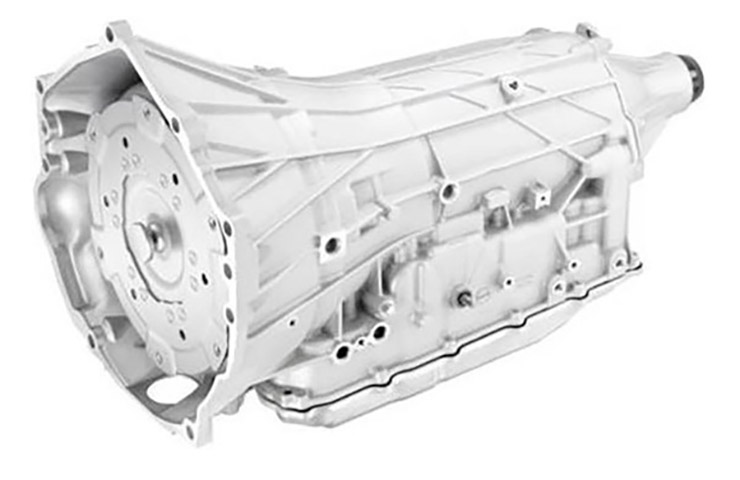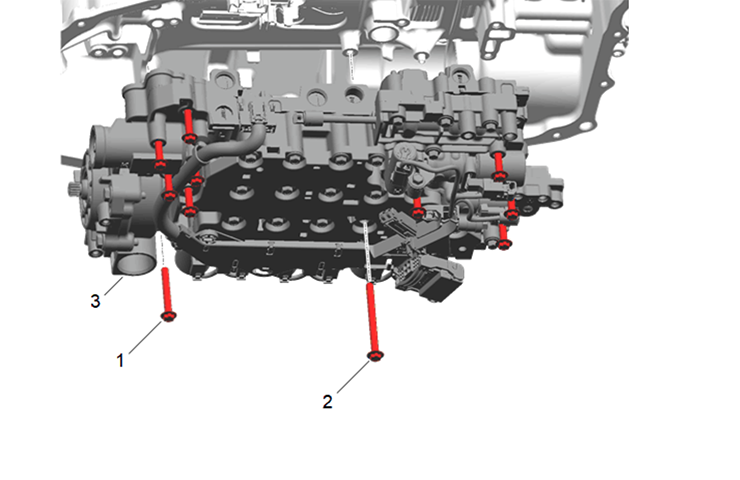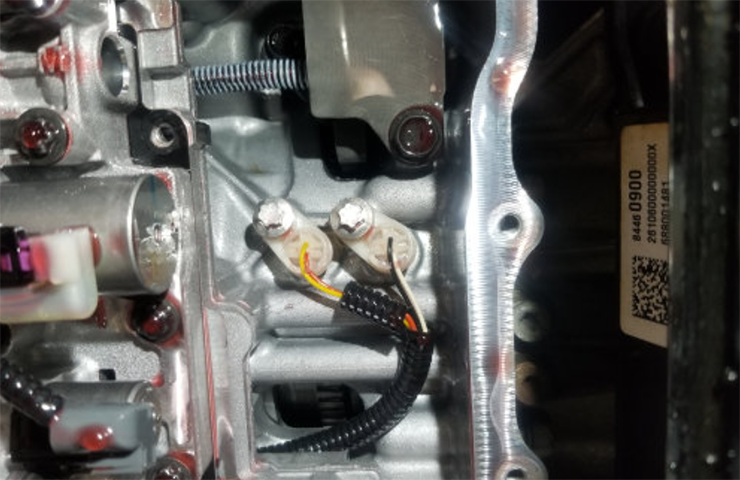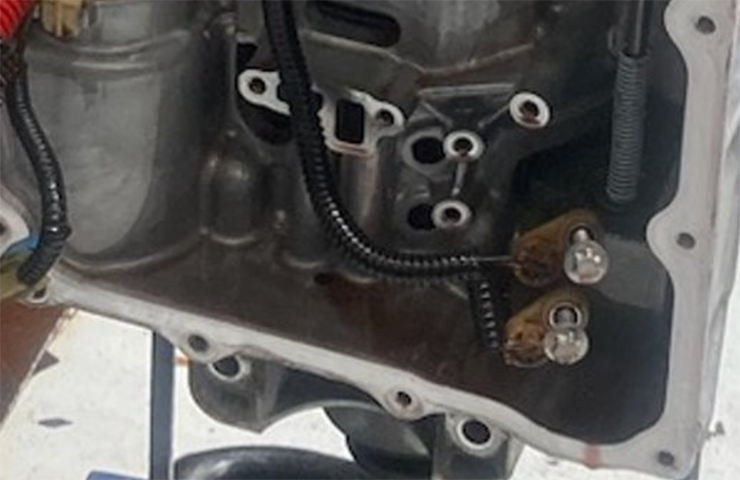The 8-speed automatic transmissions (RPO M5N, MNU, M5U, M5X, MHA, M5T, MQE, MQD) in some 2015-2018 Corvette; 2015-2020 Escalade, Yukon; 2015-2023 Silverado 1500, Sierra 1500; 2016-2018 CTS; 2016-2019 ATS, CTS; 2016-2023 Camaro; 2017-2023 Colorado, Canyon; 2017-2024 Express, Savana; and 2020-2024 CT4 models (Fig. 5) may exhibit hard or harsh shifts.
 Fig. 5
Fig. 5
There are several steps that should be taken to improve the shift quality, depending on the mileage on the vehicle.
First 1-2 Shift
If there is a hard 1-2 shift felt on the first 1-2 shift of the day under light throttle, it is to be considered normal as there is a clutch purge being performed at this time. Subsequent 1-2 shift should have an acceptable shift feel. This does not impact the designed performance of the transmission and no repair attempts should be performed. Refer to Bulletin #16-NA-361 for more details.
Low-Mileage Vehicles
On low-mileage vehicles — less than 1 year old with less than 3,000 miles (4,828 km) — with a hard shift, follow the Transmission Service Fast Learn and the adaptive learning procedures in Bulletin #16-NA-019.
While following Bulletin #16-NA-019, do not use the clutch volume or the spring learns that can be found in GDS2. These data parameters may lead to technicians believing the learn has completed when it may not have. These parameters are algorithmically based to change once the conditions have been met twice for the clutch or spring learn, which does not mean that the clutch or spring has completely finished the learn. Drive the vehicle as instructed until there is a difference felt in the shift to determine if the clutch learn is progressing.
Higher-Mileage Vehicles
On vehicles with greater than 3,000 miles (4,828 km), or vehicles that may have objectionable shifts once the adaptive learning procedures in Bulletin #16-NA-019 have been completed, remove the transmission pan and inspect for any debris. If there is not an unreasonable amount of debris found, based on the mileage of the vehicle, replace the valve body. (Fig. 6) After installing the valve body, complete the procedures in Bulletin #16-NA-019.
 Fig. 6
Fig. 6
If there is excessive debris in the transmission pan, or the condition remains following the valve body replacement and after performing the adaptive learning procedures, remove the transmission and inspect and reset the clutch pack travel as necessary.
Setting the clutch pack travel to the tighter end of the range tends to produce a more appealing shift. During tear down, the steels should be inspected for uneven or excessive wear and replaced as needed if there is damage or distress seen to the friction discs.
Also, to address hard garage shifts that the adaptive learning procedures or the valve body replacement does not correct, setting the transmission end play toward the tight end of the specification (.008”-.012”) has proven to be an effective repair.
Overheating Condition
If there are signs of overheating, verify the TBV valve operation using a laser thermometer. Measure inlet and outlet temperatures of the cooler by measuring the lines at different locations.
Speed Sensor Installation
In addition, if the speed sensors were recently replaced and the Transmission Service Fast Learn fails for excessive vehicle speed, or if DTCs P0717, P0722, P0746 and/or P0796 also set, inspect the speed sensors for the proper orientation. When correctly installed, the smaller portion of the sensor conduit should be facing the rear of the unit. (Fig. 7, Incorrect; Fig. 8, Correct)
 Fig. 7
Fig. 7
 Fig. 8
Fig. 8
Refer to #PIP5943 for additional information.
– Thanks to Bill Alley



















Zach is correct.
We are looking at the conduit and the direction it faces.
The short piece of conduit should be facing the rear of the transmission, not the front.
If you look at figure 8 rotated 90 degrees, you can really see the difference in the orientation.
Also, make sure not to use wire color as a guide as a replacement harness often has different wiring colors, which may lead to confusion.
I think it means if the sensor is in the wrong hole, the black plastic conduit around the wiring for that sensor would be pointing inboard, instead of towards the rear of the transmission.
very hard to tell orientation with those images, 2 different pictures shown